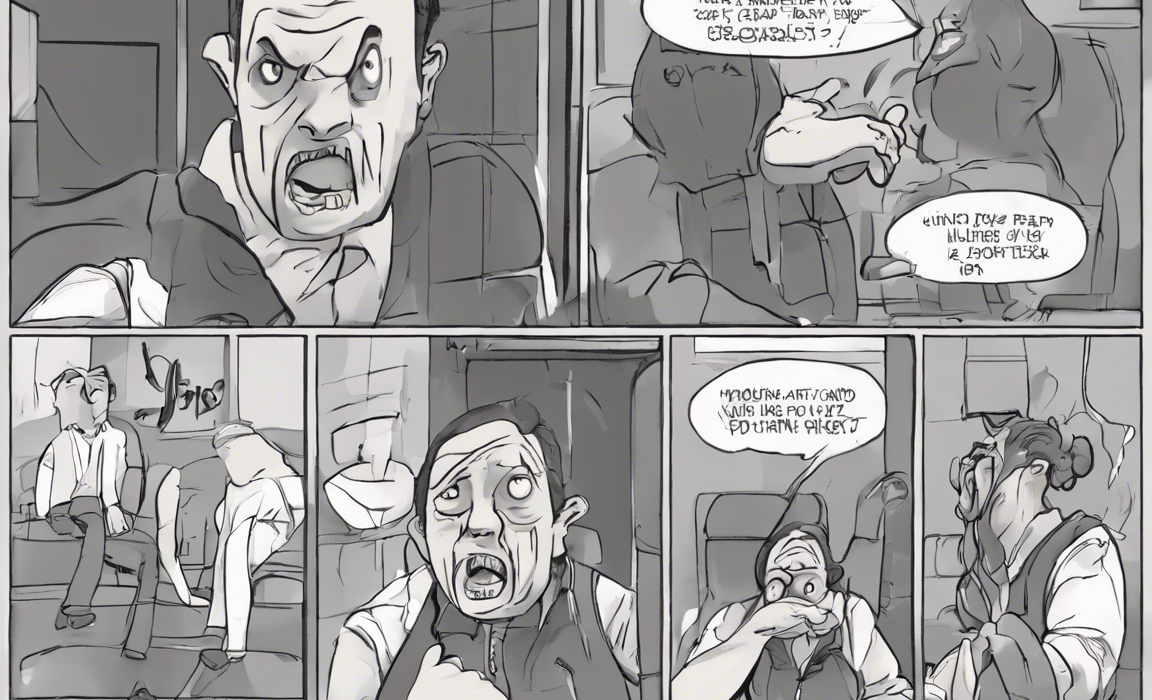Emotions are an intricate part of the human experience, influencing our thoughts, behaviors, and relationships with others. Two potent emotions that often play a significant role in our lives are fear and disgust. While these emotions may seem unpleasant, they serve important evolutionary purposes and can profoundly shape our perceptions and decisions.
The Nature of Fear and Disgust
Fear is a primal emotion that helps us respond to situations that may threaten our well-being. It triggers a fight-or-flight response, preparing the body to either confront the danger or flee from it. Fear can be rational, such as the fear of physical harm or danger, or irrational, like phobias.
Disgust, on the other hand, is an emotion that helps us avoid potentially harmful substances or situations. It evolved as a protective mechanism to prevent us from ingesting toxic or contaminated materials. Disgust can also be elicited by moral violations or offensive behaviors.
The Relationship Between Fear and Disgust
While fear and disgust are distinct emotions, they often interact and overlap in complex ways. At times, a situation or stimulus can trigger both fear and disgust simultaneously. For example, encountering a venomous snake may evoke fear due to the threat it poses, as well as disgust at its slimy appearance.
Psychological and Physiological Responses
Both fear and disgust elicit distinct psychological and physiological responses in individuals. Fear activates the amygdala in the brain, triggering a cascade of reactions that prepare the body for action. These responses include increased heart rate, heightened alertness, and the release of stress hormones like adrenaline.
Disgust, on the other hand, is associated with the insula, a brain region involved in processing emotions and bodily sensations. Disgusting stimuli can lead to physical reactions like nausea, facial expressions of aversion, and the desire to withdraw from the source of disgust.
Cultural and Individual Variations
The experience and expression of fear and disgust can vary across cultures and individuals. Culture plays a significant role in determining which stimuli elicit fear or disgust and how these emotions are regulated and expressed. For example, what may be considered disgusting in one culture may be perfectly acceptable in another.
Individual differences also influence how people experience fear and disgust. Some individuals may have heightened sensitivity to these emotions, leading to phobias or obsessive-compulsive behaviors. Others may have a higher threshold for experiencing fear or disgust, making them less reactive to certain stimuli.
The Role of Fear and Disgust in Mental Health
Fear and disgust can also play a crucial role in mental health disorders. Anxiety disorders, such as phobias, panic disorder, and post-traumatic stress disorder, are characterized by excessive and irrational fear responses to specific stimuli or situations. Obsessive-compulsive disorder (OCD) involves intrusive thoughts that elicit disgust and the need to perform repetitive behaviors to alleviate anxiety.
Understanding the interplay between fear and disgust is essential in treating these mental health conditions effectively. Therapeutic approaches like exposure therapy, which involves gradually exposing individuals to feared stimuli, can help desensitize them and reduce their fear response. Cognitive-behavioral therapy can also be beneficial in addressing the irrational thoughts and behaviors associated with fear and disgust.
Practical Applications and Implications
Recognizing the power of fear and disgust can have various practical applications in different fields. In marketing, understanding the emotional triggers of fear and disgust can help advertisers create compelling campaigns that resonate with consumers. In healthcare, recognizing how fear and disgust influence patient behavior can improve communication and adherence to treatment plans.
In design and architecture, considering the emotional impact of fear and disgust can help create environments that promote well-being and comfort. By incorporating elements that alleviate fear and disgust, such as cleanliness and safety features, designers can enhance the user experience and overall satisfaction.
FAQs
- What is the evolutionary purpose of fear and disgust?
- Fear helps us respond to potential threats, while disgust protects us from harmful substances or situations.
- Can fear and disgust occur simultaneously?
- Yes, certain stimuli can elicit both fear and disgust responses at the same time.
- How do fear and disgust differ at a physiological level?
- Fear activates the amygdala and prepares the body for action, while disgust is associated with the insula and can lead to physical reactions like nausea.
- Are fear and disgust culturally universal emotions?
- While fear and disgust are universal, the stimuli that elicit these emotions can vary across cultures.
- How do fear and disgust contribute to mental health disorders?
- Excessive fear and disgust responses can manifest in anxiety disorders and OCD, impacting individuals’ emotional well-being.
In conclusion, fear and disgust are powerful emotions that serve essential functions in our lives. Understanding their relationship and impact can provide valuable insights into human behavior, mental health, and various aspects of our daily experiences. By acknowledging and addressing these emotions effectively, we can cultivate emotional awareness and promote overall well-being.


